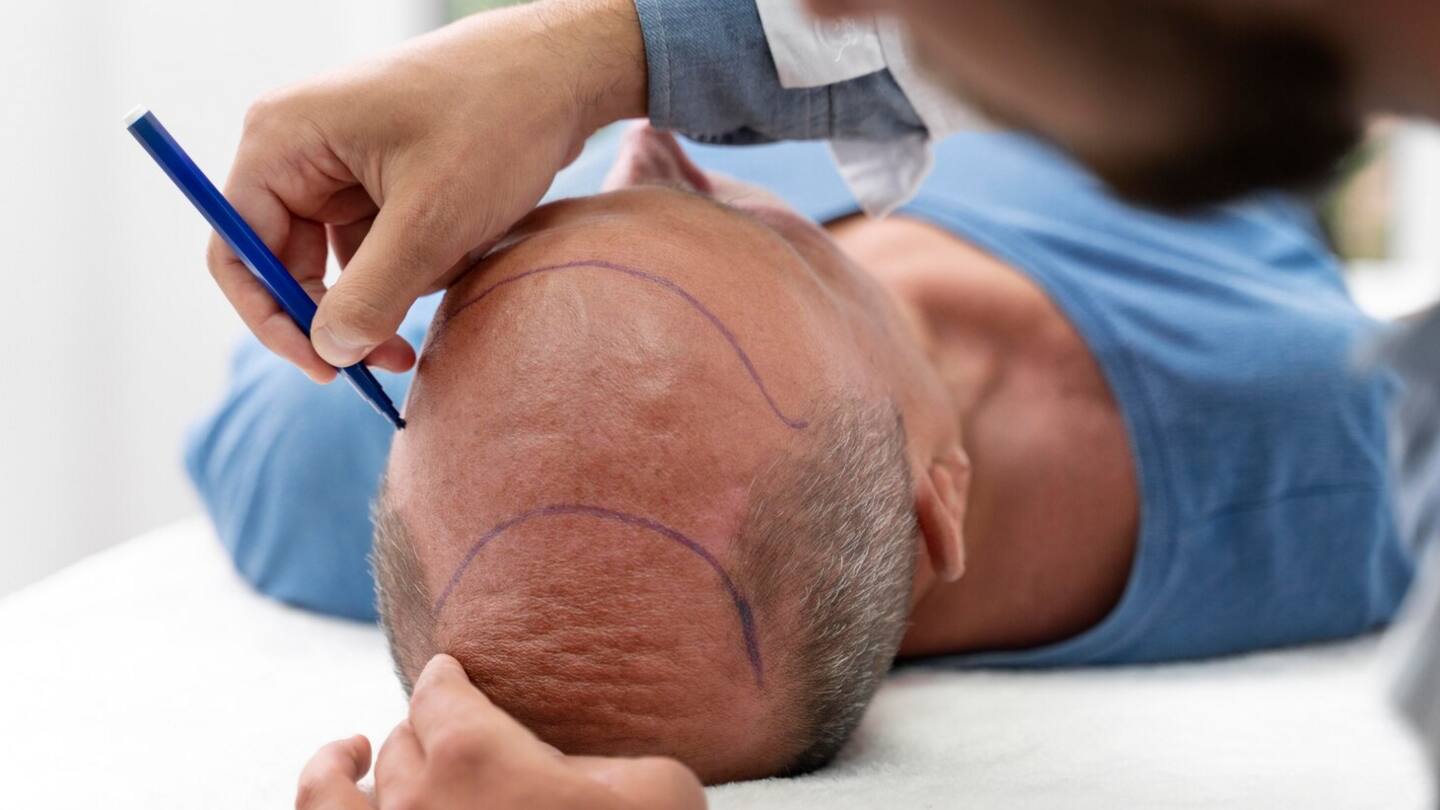
Hair transplant: Types, risks, side effects, and recovery
What's the story
"Hair" is everything you need to know. A hair transplant is a technique that involves moving hair from one place to another on your head to help you overcome hair fall-induced baldness or thinning. It is a desired way for those who want to restore or replace hair and have already tried other ways of doing so. Read on to know more about it.
Process
Let's see how a hair transplant works
In a hair transplant surgery, the healthcare provider takes grafts or tiny pieces of skin that contain healthy hair. These grafts are usually on your head or at the back of the scalp, where the hair grows thickest. These grafts are called donor sites, which are then moved to the hairless patches of your head. Once the transplant part heals, it promotes hair growth.
Types
There are 4 different types of hair transplant surgeries
Hair grafting involves cutting tiny pieces of skin containing healthy hair to hide baldness. Another is scalp reduction, in which the surgeon loosens skin with hair and pulls it toward a nearby bald patch. Flap surgery occurs in multiple phases and involves making superficial cuts around three sides of a donor site. In tissue expansion, surgeons insert an implant that expands to cover baldness.
Risk
Just like any surgery, hair transplant also has some risks
As there are risks associated with every kind of surgery, a hair transplant also comes with a set of potential dangers. A patient may develop an infection or scarring, which are the two most common risks. They may also have an allergic reaction to anesthesia or experience excessive blood loss. Failed grafts/flaps and a loss of sensation on the scalp are other risks.
Side effects
Hair transplant may also have some temporary, curable side effects
More often than not, the side effects of hair transplant, if they show up, are temporary and curable. Patients may experience itching, loss of sensation, pain, or even throbbing in the regions where the surgery has been performed. In addition to this, they may also develop crusts or scabs, swelling, and tightness in the said areas. These can show up on donor sites, too.
Recovery
Recovery depends on the type of hair transplant surgery
A hair transplant is an outpatient surgery, which means that you can go home the same day you have undergone treatment. However, the recovery depends on the kind of surgery conducted. On the first day, the patient can remove the bandage and may wash their hair on the next day. Your surgeon may give you a timeline to resume other activities.